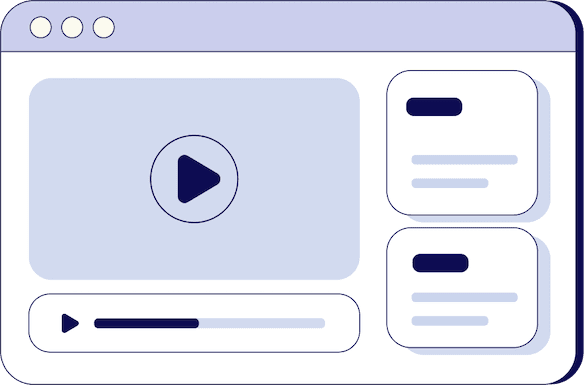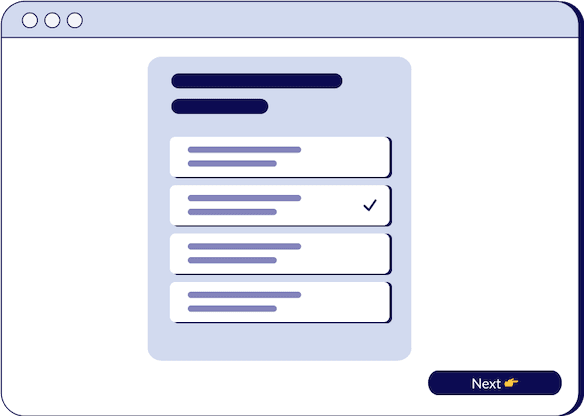
9 Quick Sales Presentation Tips All Salespeople Must Know
Marc Wayshak
Founder, Author & Sales Strategist

- duration
- 15 min
- Average Score
- 91%
- Stars
- 5
Have you ever encountered a situation in sales where, after a seemingly successful presentation, the prospect becomes unresponsive or indecisive? This frustrating scenario is not uncommon in the sales world, and often, it's a direct result of a sales presentation that missed the mark. Research indicates that over 75% of sales presentations leave prospects feeling misunderstood by the salesperson. To address this issue, this session provides essential tips to refine your sales presentation skills, ensuring they are tailored to your prospect's specific needs and concerns.
The Importance of Thorough Discovery Before Presenting
The cornerstone of an effective sales presentation is a comprehensive discovery phase. The idea of pitching your product or service before understanding the prospect's unique challenges is an outdated approach that often leads to misalignment. A well-executed discovery process involves in-depth questioning to determine if the prospect is a good fit, understand their specific problems, and confirm their decision-making capacity and budget. This session emphasizes the critical role of discovery in crafting a presentation that resonates with the prospect's needs and avoids the common pitfall of presenting solutions that miss the mark.
It may seem obvious, but tailoring your presentation exclusively to address the prospect's challenges is a practice often overlooked. Sales presentations that veer off into features and benefits irrelevant to the prospect's concerns are counterproductive. This part of the session highlights the importance of staying focused on the prospect's pain points, ensuring that every aspect of your presentation directly addresses these issues. By doing so, you increase the relevance and impact of your presentation, significantly boosting the chances of a successful sale.
Avoiding the 'One Last Thing' Trap
A common mistake in sales presentations is the urge to present 'one last thing' – an additional feature or benefit that the salesperson is excited about but may not align with the prospect's interests. This approach can detract from the main message and potentially lose the prospect's interest. This session advises against overloading your presentation with unnecessary information and instead advocates for keeping it concise and focused. By resisting the temptation to add 'just one more thing,' you maintain the prospect's engagement and ensure the presentation remains relevant to their needs.
In summary, refining your sales presentation to align closely with your prospect's specific challenges and needs is crucial for successful outcomes. This part of the session delves into the importance of a thorough discovery process, focusing on solutions to the prospect's problems, and avoiding the pitfall of overloading the presentation with irrelevant information. Watch this session to learn how to enhance your sales presentations for better engagement and higher success rates.
Did you know that incorporating storytelling and interactive elements can significantly improve the effectiveness of your sales presentations? In the competitive realm of sales, capturing and maintaining a prospect's attention is paramount. This session explores innovative techniques to elevate your sales presentations, making them more engaging and impactful for your prospects.
Storytelling is a potent tool in sales, and case studies are an excellent way to incorporate this into your presentations. Most standard sales presentations tend to focus on dry facts, features, or benefits, often failing to engage the prospect. By presenting case studies, you can vividly illustrate how you've successfully addressed similar challenges for other clients. This part of the session discusses how to craft compelling case studies that resonate with your prospects, demonstrating your solutions' real-world impact and effectiveness.
Implementing the 60 Second Rule
Engagement is key in sales presentations, and the '60 Second Rule' offers a practical approach to ensure continuous interaction. According to this rule, you should not speak for more than 60 seconds without re-engaging the prospect. This technique aligns with findings from top sales performance studies, showing that the most successful sales interactions involve frequent back-and-forth dialogue. This session provides strategies for maintaining engagement throughout your presentation, ensuring that every minute is interactive and that the prospect is consistently involved in the conversation.
Feedback Loops for Real-Time Adjustments
Feedback loops are a tactical way to apply the 60 Second Rule effectively. These are simple, quick questions interspersed throughout the presentation, like "Does that make sense?" or "Is this in line with what you're looking for?" These questions not only keep the prospect engaged but also provide immediate feedback. If the prospect indicates confusion or disinterest, you can quickly adjust your approach. This part of the session offers insights into using feedback loops to keep the presentation on track and aligned with the prospect's interests and concerns.
Incorporating storytelling through case studies, engaging the prospect every 60 seconds, and utilizing feedback loops can transform your sales presentations from mundane to compelling. This part of the session is dedicated to teaching sales professionals how to apply these techniques to create more dynamic, interactive, and effective presentations. Watch this session to learn how to leverage these innovative strategies to enhance your sales presentations and connect more effectively with your prospects.
Mastering the art of conciseness and clarity is crucial in sales presentations. A common misstep for many sales professionals is extending the presentation with unnecessary details, which can lead to losing the prospect's interest or even the sale itself. This final part of our session focuses on how to keep your sales presentations succinct, impactful, and aligned with your prospect's needs and expectations.
Keeping Presentations Short and Focused
The importance of brevity in sales presentations cannot be overstated. Often, salespeople, driven by their enthusiasm for their product or service, tend to overshare, leading to lengthy and less effective presentations. This part of the session emphasizes the value of keeping your presentation as short and to the point as possible. By focusing solely on addressing the prospect's challenges and avoiding the temptation to add extraneous features or benefits, you increase the likelihood of maintaining their interest and moving closer to a sale.
A critical aspect of successful sales presentations is establishing clear and scheduled next steps. The concept of 'one-call closes' is becoming less relevant in today's complex sales environment, where multiple steps are often required to close a deal. This session highlights the importance of ending each presentation with a clearly defined and scheduled next step. Whether it's setting a follow-up meeting or outlining the process for finalizing a deal, having a concrete plan in place ensures that the sales process continues to move forward efficiently.
Adapting to Prospect Feedback During Presentations
Adaptability is key in sales presentations. If at any point you sense that the prospect is losing interest or if the presentation seems to be going off track, it's crucial to pause and reassess. This part of the session discusses strategies for recognizing and responding to these cues. For instance, if a prospect seems disengaged, asking open-ended questions like, "Have I missed something?" or "Is there another area you'd like us to focus on?" can provide valuable insights. This approach allows you to realign the presentation with the prospect's interests and concerns, thereby increasing the chances of a successful outcome.
In conclusion, mastering sales presentations involves being concise, clear, and responsive to your prospect's needs. This session has provided key strategies, including keeping presentations focused, establishing clear next steps, and being adaptable based on prospect feedback. Implementing these techniques will not only enhance your sales presentations but also significantly improve your overall sales effectiveness. Watch this session to learn how to refine your presentation skills and achieve better results in your sales endeavors.
How Triple Session works
Training, Testing, & Feedback
Triple Session's proven formula accelerates your sales performance through consistent, organized practice, backed by measurable results.

Bite-Sized Knowledge
Our expert-led video sessions simplify complex sales concepts into easy-to-digest 5-15 minute videos for better retention.

Test Your Understanding
After each session, there will be a quiz to test your understanding and help you improve on any areas that need more attention.

Evaluate and Grow
Get progress snapshots after each quiz to track your improvements and achieve your sales mastery goals.